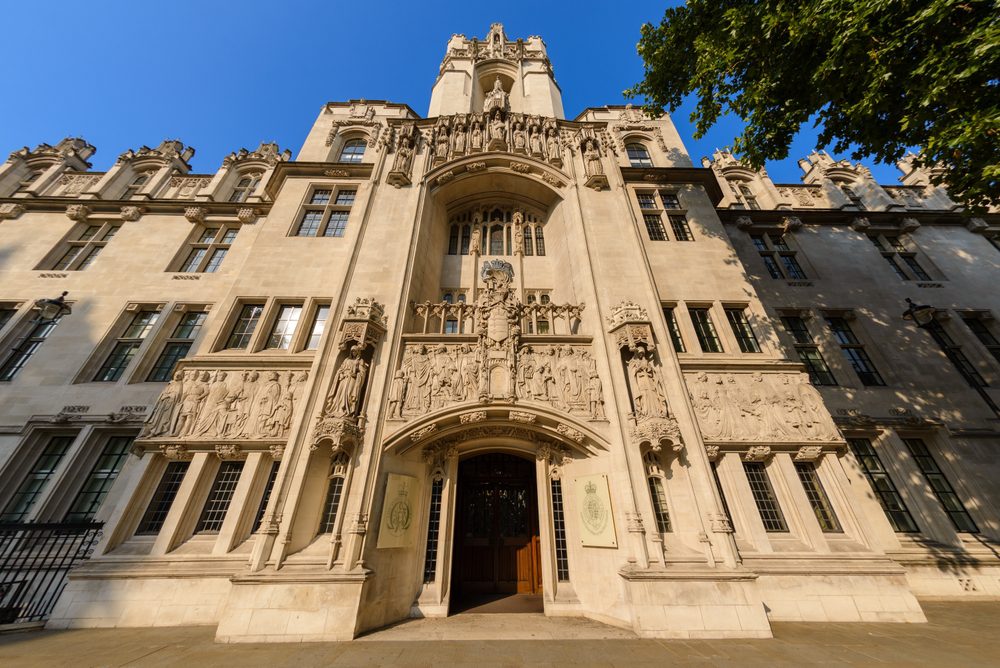On 16 April 2025, the UK Supreme Court issued a landmark ruling confirming that the word “sex” in the Equality Act 2010 refers exclusively to biological sex, not a person’s legal gender. This clarification came in response to a challenge to Scottish legislation and is expected to have a wide-reaching impact on how equality law is interpreted across the UK, particularly in areas like public appointments and single-sex spaces.
Legal Background: The case against Scottish Government Policy
The case arose from a legal challenge by For Women Scotland, a campaign group focused on women’s sex-based rights. The group contested how the Scottish Government implemented the Gender Representation on Public Boards (Scotland) Act 2018.
The Act aims to improve gender balance in public life by setting a target for 50 per cent of non-executive members on public boards to be women. However, the Scottish Government’s guidance stated that the definition of “woman” should include transgender women with a Gender Recognition Certificate (GRC), a legal document that allows a person to change the sex on their birth certificate under the Gender Recognition Act 2004.
For Women Scotland argued that this redefinition of “woman” was unlawful because it effectively changed the meaning of “sex” under the UK-wide Equality Act 2010, which only the UK Parliament can alter.
The UK Supreme Court’s ruling: Sex in law means biological sex

In a unanimous judgement, the UK Supreme Court found that the Equality Act uses “sex” to mean biological sex, and that including trans women with GRCS in the category of “women” for the 2018 Scottish Act was legally incorrect.
The UK Supreme Court held that:
● The terms “woman,” “man,” and “sex” in the Equality Act refer to biological categories.
● A Gender Recognition Certificate does not change a person’s sex for the purposes of the Equality Act.
● The Scottish Parliament does not have the legal authority to redefine terms in a UK-wide law.
This judgment overturned the previous interpretation supported by the Scottish Government and confirms that only biological females can be counted toward sex-based targets under this Act.
Immediate impact: Public boards and representation
The most immediate effect of the UK Supreme Court ruling is on public board representation in Scotland. From now on, the 50 per cent target for female representation must be calculated using biological sex. Trans women, even those who have legally changed their gender through a GRC, can no longer be counted toward the female quota on public boards.
This sets a firm legal precedent: quotas or policies based on the protected characteristic of “sex” must be grounded in biology, not legal or self-identified gender.
Broader impacts on single-sex services
Beyond its immediate effect on public board appointments, the UK Supreme Court ruling carries significant implications for the provision of single-sex services and access to sex-segregated spaces across the UK. Areas likely to be affected include hospital wards, domestic violence refuges, toilets, changing rooms, prisons, and competitive sports, all of which are protected under the Equality Act.
Under existing guidance from the Equality and Human Rights Commission (EHRC), service providers are permitted to restrict access to such spaces based on sex, including the exclusion of transgender individuals, where doing so is a proportionate means of achieving a legitimate aim. The UK Supreme Court’s ruling now provides a firmer legal footing for such decisions, making clear that the protected characteristic of sex refers to biological sex and not legal gender. This clarification may prompt a review of existing practices across public institutions and private organisations that deliver sex-specific services.
Protections for trans people remain in place
Importantly, the UK Supreme Court ruling does not remove protections for trans people under UK law. The Equality Act treats gender reassignment as a separate protected characteristic, and people undergoing or who have undergone gender transition remain protected from discrimination.
The difference now is that trans people cannot automatically be included in protections or policies that are specifically based on sex, unless they are biologically that sex.
For example, a trans woman is protected from discrimination based on gender reassignment – but that doesn’t mean she can claim rights or access based on being female under the sex characteristic.
Reactions across the UK
The UK Supreme Court ruling has sparked strong reactions across the political and social spectrum:
● For Women Scotland welcomed the decision as a vindication of sex-based legal protections.
● LGBTQ+ groups such as Scottish Trans and Stonewall expressed concern that the decision could restrict trans people’s participation in public life.
● The UK Government described the outcome as offering “clarity and confidence” for service providers.
● The Scottish Government said it would take time to study the ruling and assess its implications for devolved policy.
Long-term legal and political implications for UK equa
The UK Supreme Court’s judgment establishes an important precedent for the interpretation and application of equality law. Organisations and employers across the UK, from local authorities and NHS trusts to universities, charities, and corporate boards, may need to review and update their equality policies to ensure compliance with the clarified legal definition of “sex.”
The decision may also reignite political debate around potential reform of the Gender Recognition Act 2004 and the Equality Act 2010. On one side, campaigners have called for tighter definitions to preserve single-sex services and female representation. On the other hand, LGBTQ+ organisations have warned that the law needs modernising to better reflect lived realities and uphold the rights of trans people.
At the heart of the issue is a legal principle now definitively settled by the UK Supreme Court: in UK equality law, sex means biological sex, and only the UK Parliament can change that.

